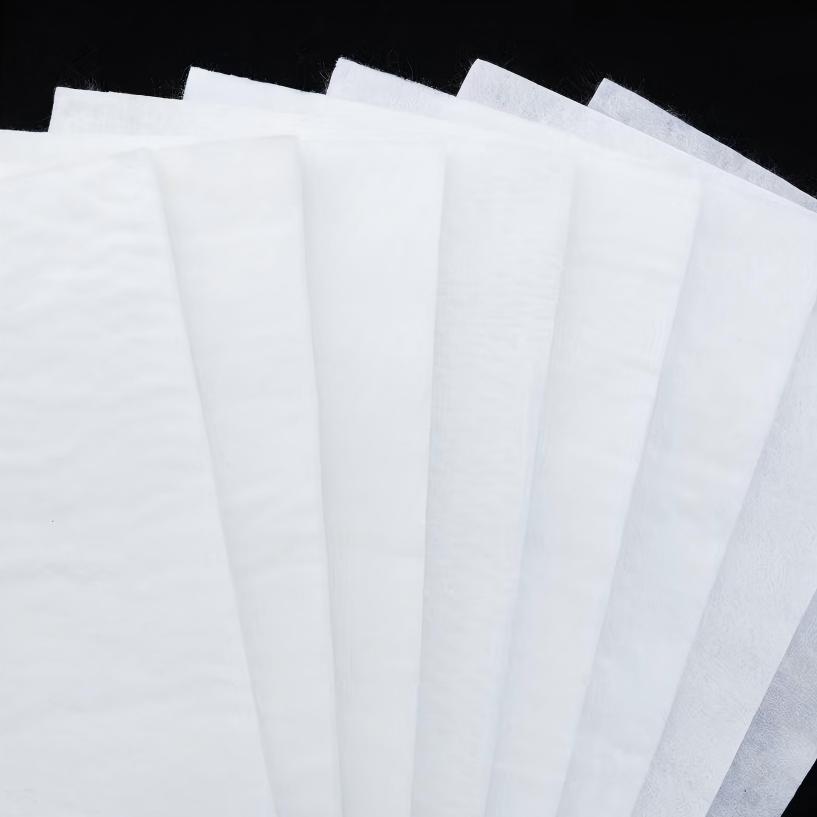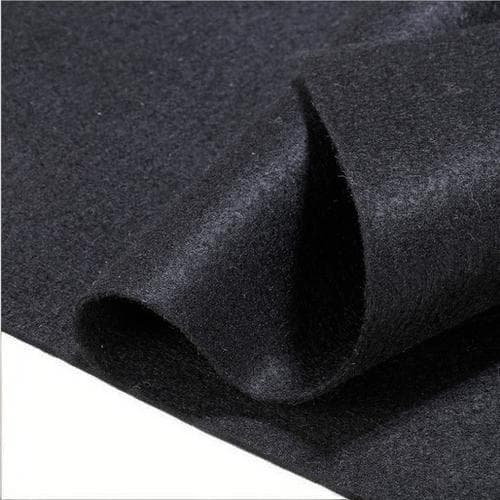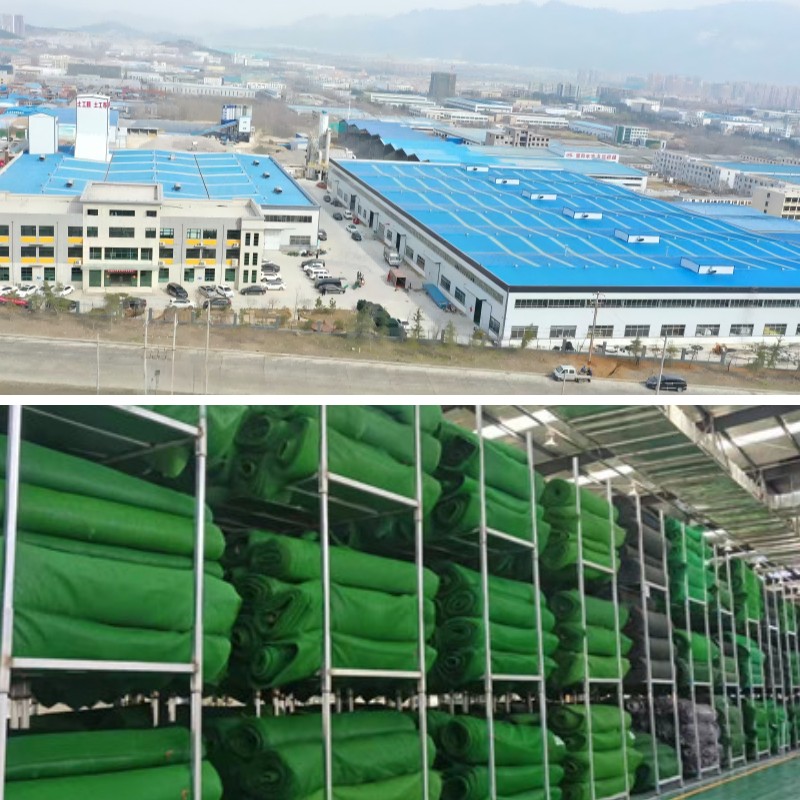Geotextile Anti UV
1.Anti-aging: Reduces UV-induced fiber embrittlement, extending service life.
2.Function retention: Maintains stable drainage and reinforcement performance in outdoor environments.
3.Outdoor adaptability: Suitable for open-air projects like slopes and dikes, saving extra protection costs.
4.Strong sunlight resistance: Enhances weatherability in high-sunlight areas, reducing extreme damage to ensure safety.
Product Introduction
1、 Basic attributes
Geotextile Anti UV is a functional geotechnical material made from polymer fibers such as polypropylene and polyester as substrates, by adding anti UV additives (such as hindered amines and benzotriazole light stabilizers) or using modified fiber technology. Its physical structure is mostly non-woven mesh or woven structure, which has chemical stability against ultraviolet radiation while maintaining its original permeability and tensile strength.
2、 Core functions
Blocking UV damage: By absorbing or reflecting UV rays through the anti UV components in the material, the direct exposure of UV rays to geotextile fibers is reduced, preventing fiber molecular chain breakage and aging brittleness.
Maintain structural stability: Maintain the mechanical properties of geotextiles (such as tensile strength and tear strength) in long-term outdoor environments to avoid core functional failures such as drainage and reinforcement caused by UV aging.
Extend the service life of the project: reduce the degradation rate of geotextiles in outdoor scenes, reduce the frequency of engineering maintenance caused by material aging, and ensure the long-term safety of structures such as roadbeds and slopes.
3、 Main features
Strong aging resistance: it can be used for a long time in harsh environments such as strong sunshine and high temperature, effectively delaying the oxidation and degradation of materials, and its service life is more than 30% longer than that of ordinary geotextiles.
Good functional compatibility: While possessing UV resistance, it does not affect the basic functions of geotextile such as drainage, filtration, and reinforcement, and is suitable for various engineering scenarios.
Wide environmental adaptability: especially suitable for areas with strong ultraviolet radiation such as plateaus, deserts, and open-pit mining areas, reducing the loss of engineering materials due to extreme weather conditions.
Outstanding cost-effectiveness: By reducing the cost of replacement and maintenance in the later stage, lowering the investment in the entire life cycle of the project, the comprehensive economic benefits are better than ordinary geotextiles.
Product Parameters
project | metric | ||||||||||
Nominal strength/(kN/m) | |||||||||||
6 | 9 | 12 | 18 | 24 | 30 | 36 | 48 | 54 | |||
1 | Longitudinal and transverse tensile strength / (kN/m) ≥ | 6 | 9 | 12 | 18 | 24 | 30 | 36 | 48 | 54 | |
2 | Maximum elongation at maximum load in longitudinal and transverse directions/% | 30~80 | |||||||||
3 | CBR top penetration strength /kN ≥ | 0.9 | 1.6 | 1.9 | 2.9 | 3.9 | 5.3 | 6.4 | 7.9 | 8.5 | |
4 | Longitudinal and transverse tearing strength /kN | 0.15 | 0.22 | 0.29 | 0.43 | 0.57 | 0.71 | 0.83 | 1.1 | 1.25 | |
5 | Equivalent aperture O.90(O95)/mm | 0.05~0.30 | |||||||||
6 | Vertical permeability coefficient/(cm/s) | K× (10-¹~10-), where K=1.0~9.9 | |||||||||
7 | Width deviation rate /% ≥ | -0.5 | |||||||||
8 | Unit area mass deviation rate /% ≥ | -5 | |||||||||
9 | Thickness deviation rate /% ≥ | -10 | |||||||||
10 | Thickness coefficient of variation (CV)/% ≤ | 10 | |||||||||
11 | Dynamic perforation | Puncture hole diameter/mm ≤ | 37 | 33 | 27 | 20 | 17 | 14 | 11 | 9 | 7 |
12 | Longitudinal and transverse fracture strength (grab method)/kN ≥ | 0.3 | 0.5 | 0.7 | 1.1 | 1.4 | 1.9 | 2.4 | 3 | 3.5 | |
13 | Ultraviolet resistance (Xenon arc lamp method) | Longitudinal and transverse strength retention rate% ≥ | 70 | ||||||||
14 | Ultraviolet resistance (fluorescence UV lamp method) | Longitudinal and transverse strength retention rate% ≥ | 80 | ||||||||
Product Application
1. Road and slope engineering
Outdoor roadbed protection: It is laid on the surface of outdoor roadbeds on highways and rural roads to resist the aging erosion of geotextiles caused by strong sunlight, maintain smooth drainage and structural reinforcement of roadbeds for a long time, and reduce the risk of roadbed settlement and slope collapse caused by material brittleness.
High altitude slope treatment: For road slopes and mine slopes in areas with strong ultraviolet radiation such as plateaus and mountainous areas, as the core material for slope drainage and reinforcement, it can withstand strong ultraviolet radiation, ensure slope stability, and reduce maintenance frequency.
2. Water conservancy and ecological engineering
River and embankment reinforcement: Laying on open-air river embankments and reservoir slopes to resist material degradation caused by long-term sunlight exposure, continuously exerting drainage and anti-seepage effects, and preventing dangerous situations such as leakage and piping caused by the aging of geotextiles in embankments.
Ecological restoration project: used for soil reinforcement and drainage in open-pit wetlands and mining green areas, maintaining material integrity in strong sunlight environments, and cooperating with vegetation restoration to achieve long-term ecological protection, avoiding damage to restoration results due to material failure.
3. Municipal and transportation hub projects
Outdoor parking lot and square: As an underground drainage layer, it is laid on the base of the outdoor parking lot and square to resist aging caused by direct sunlight, maintain drainage function for a long time, and prevent surface water accumulation and damage to the base structure.
Airport runway perimeter protection: Used in the drainage system on both sides of the open-air runway of the airport, it can withstand strong ultraviolet rays and temperature differences between day and night, ensuring long-term smooth drainage channels and avoiding the impact of material aging on airport operation safety.
4. Special Environmental Engineering
Desert and arid region engineering: Laying in projects such as desert roads and irrigation channels in arid regions, adapting to extreme environments with strong sunlight and high temperatures, resisting the degradation of materials by ultraviolet radiation, and ensuring long-term effectiveness of drainage and reinforcement functions.
Outdoor landfill site: used for drainage and isolation of the top cover layer of the landfill site, maintaining stable performance in long-term outdoor environments, preventing leachate leakage due to UV aging, and reducing environmental pollution risks.
To sum up, the UV resistance of geotextiles plays an irreplaceable role in road slopes, water conservancy ecology, municipal traffic, special environmental projects and other outdoor or strong sunshine scenes with excellent anti-aging ability and functional stability. It not only solves the problem of aging and failure of ordinary geotextiles in strong ultraviolet environments, but also becomes a key material for improving the durability and economy of open-pit engineering by ensuring the safety of engineering structures and reducing maintenance costs in the long run, providing solid support for the long-term stable operation of various infrastructure.












